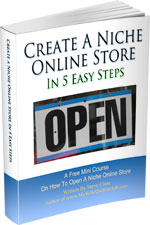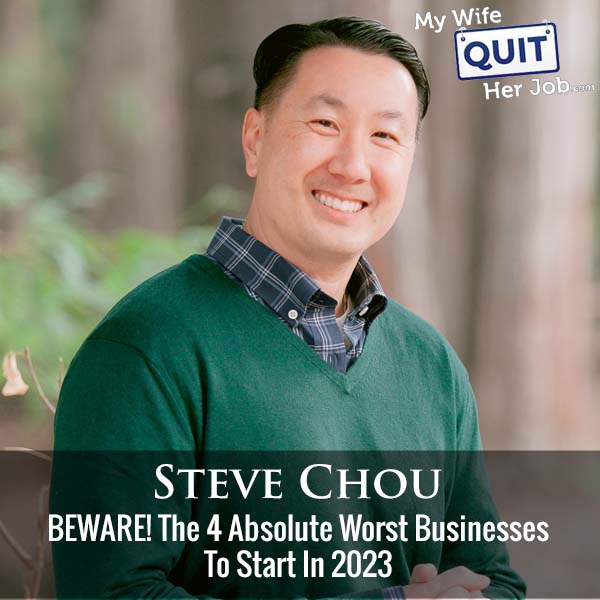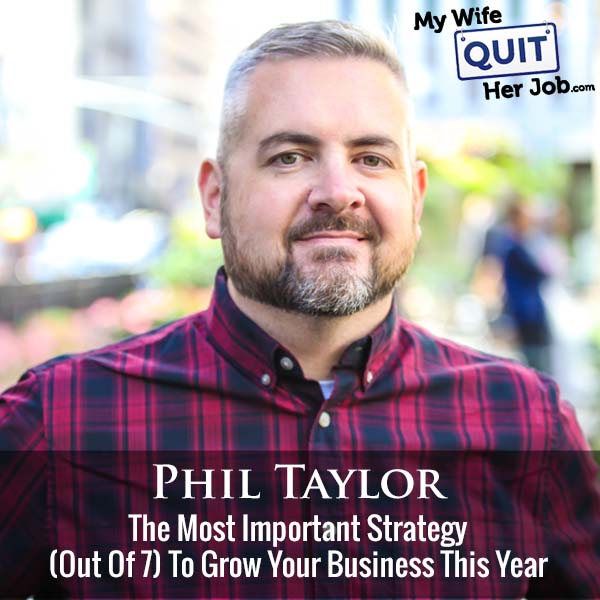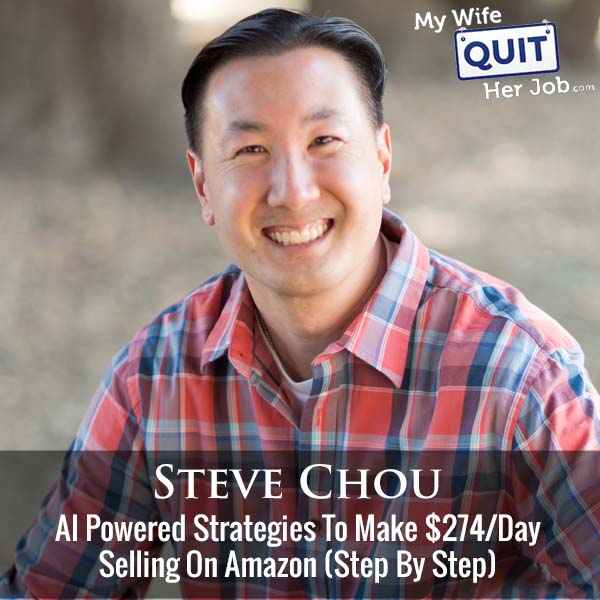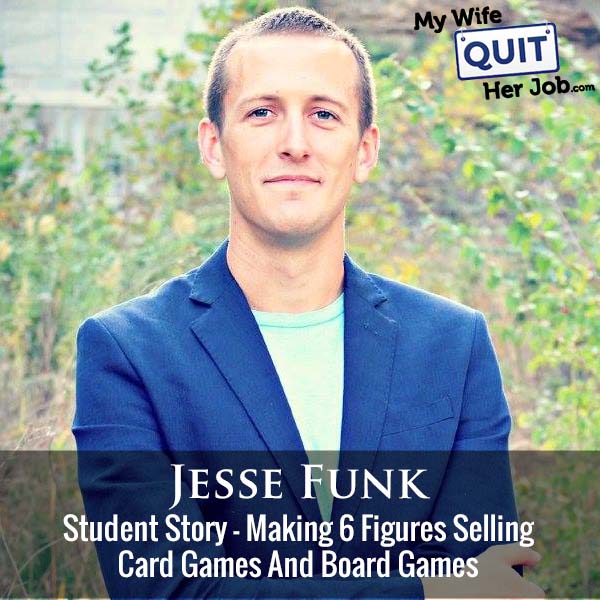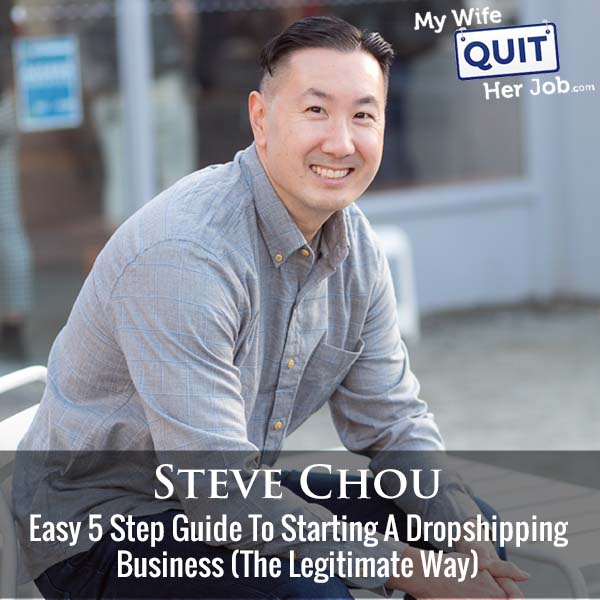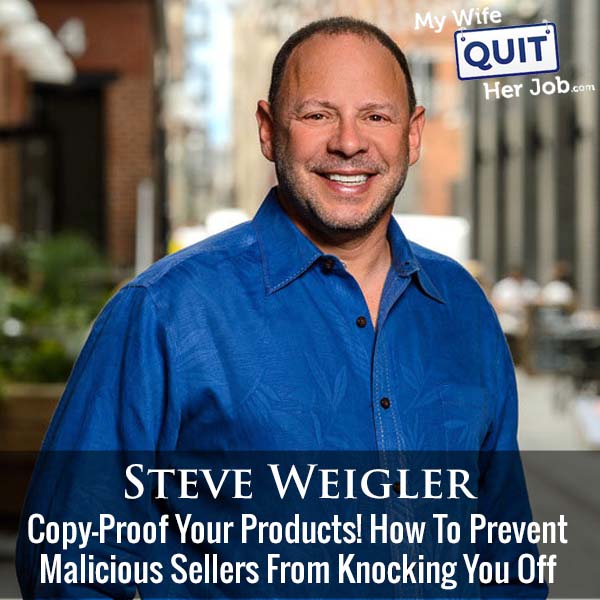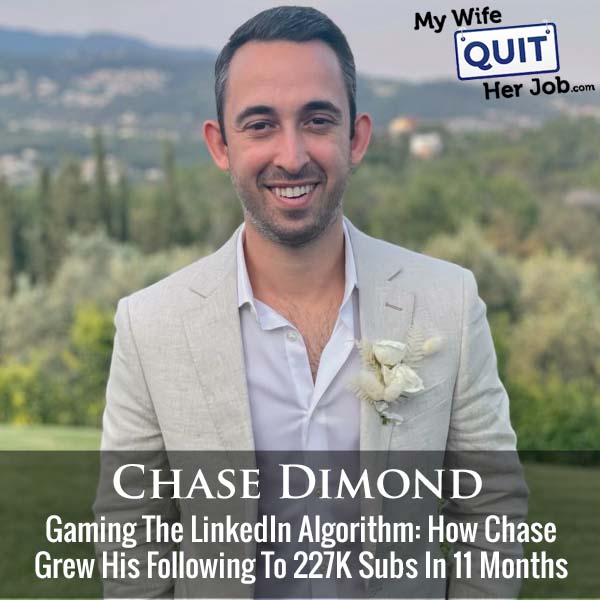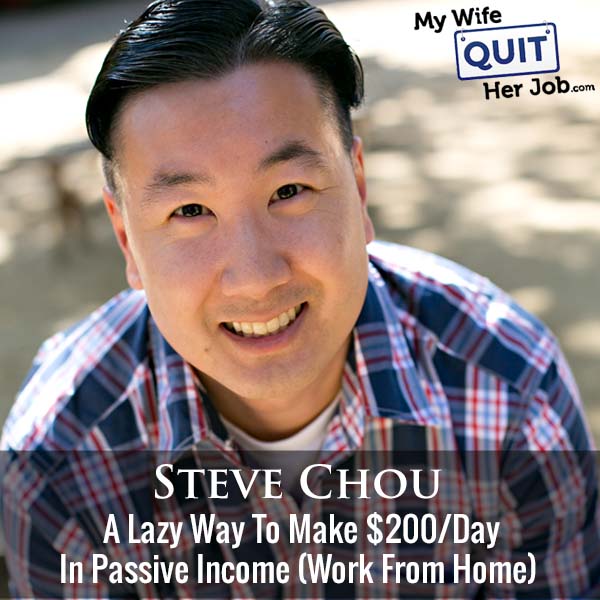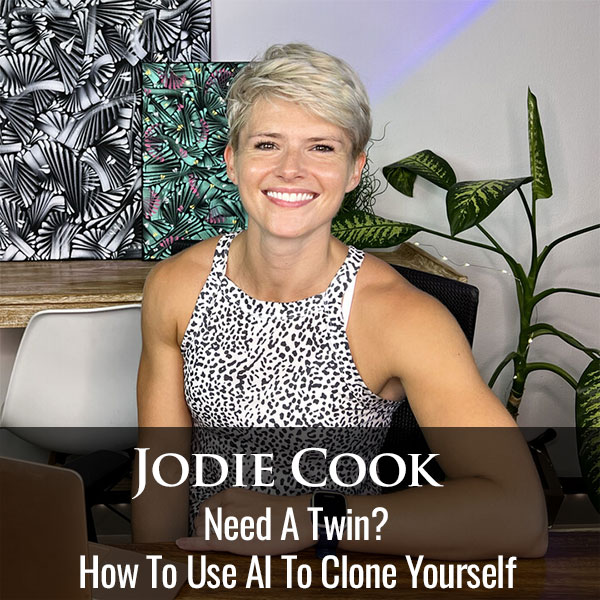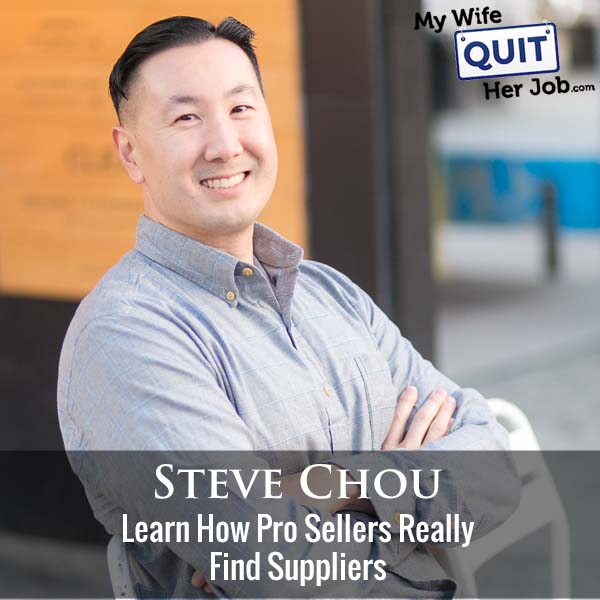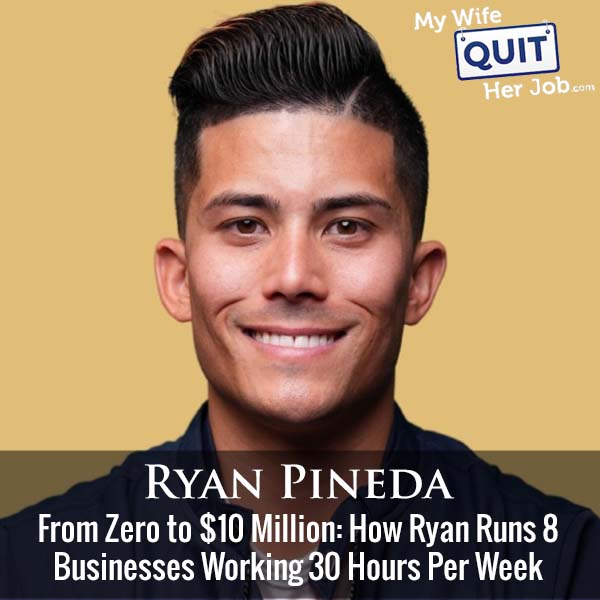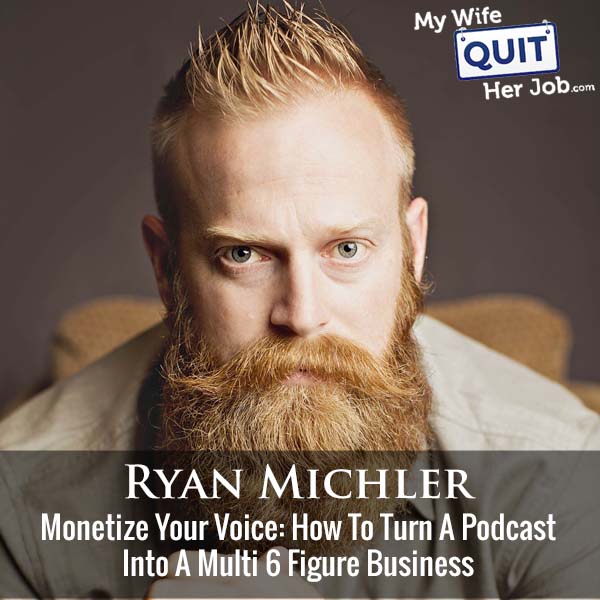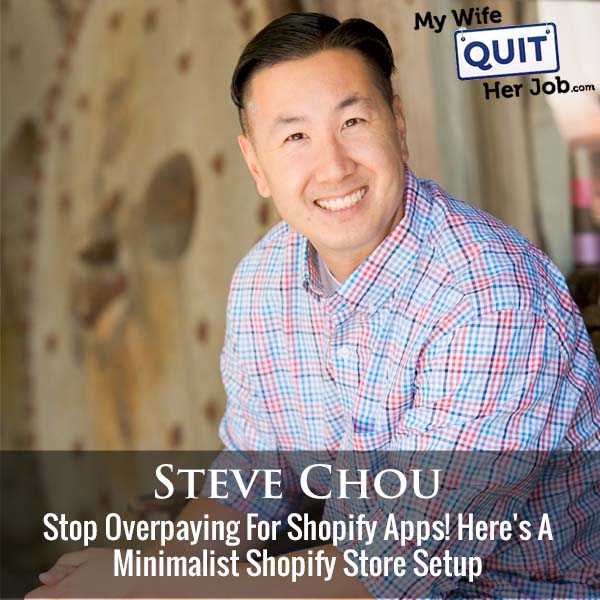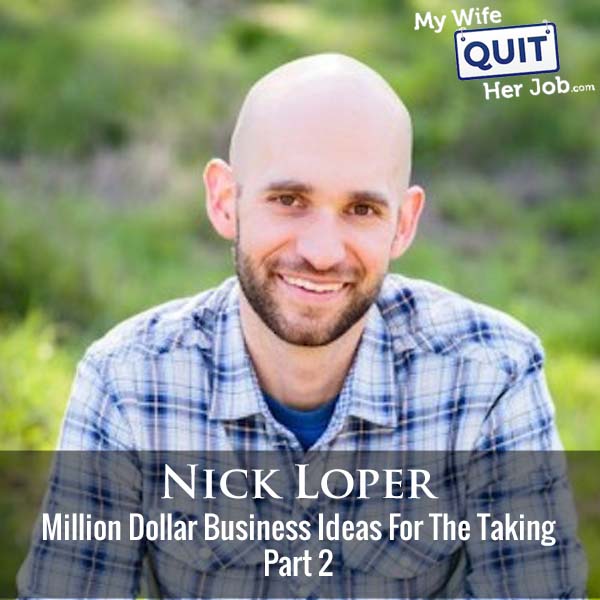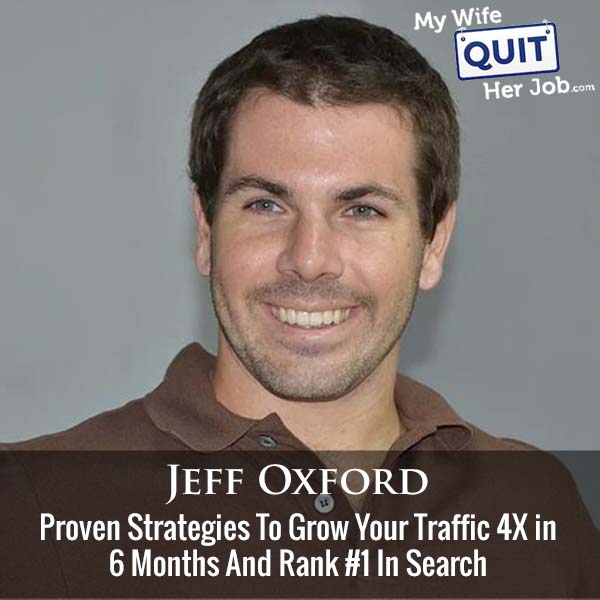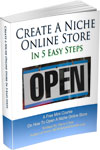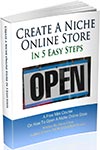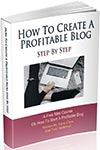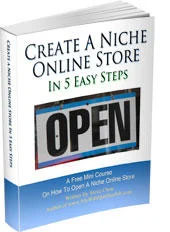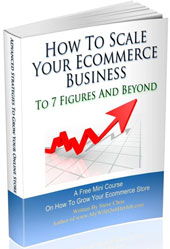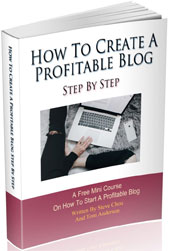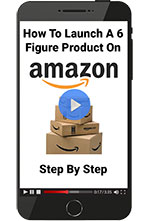Today, I’m thrilled to have Ryan Michler on the show. Ryan is the host of the incredibly popular Podcast, Order of Man, where he discusses how to become a more effective father, husband, business owner, and community leader.
In this episode, you’ll learn how Ryan got started, his philosophies on life and how he turned his podcast into several multi six figure businesses.
00:00
You’re listening to the My Wife, Quit Her Job podcast, the place where I bring on successful bootstrap business owners and delve deeply into what strategies are working and what strategies are not with their businesses. And today I’m thrilled to have Ryan Mickler on the show. And Ryan is the host of the incredibly popular podcast Order of Man. And in this episode, you’ll learn how Ryan turned his podcast into several multi six figure businesses. But before we begin, I want to give a quick shout out to Katita for sponsoring this episode. Katita is a tool that basically gives you free money every month
00:30
when you sell on Amazon, and I’m not even exaggerating. If you’ve been selling on Amazon FBA for any length of time, you know that Amazon is horrible at managing inventory and they lose or break your products all the time. In fact, I’m willing to bet that Amazon owes you a ton of money right now. Now the problem is that in order to get your money back, you have to manually track your inventory and manually file for a reimbursement. Well, Getita handles all the paperwork for you and takes just 25 % of whatever you get back.
00:57
And basically, you only pay when Katita makes you money, which makes it a no-brainer to sign up. Not only that, but Katita is giving away $400 in free reimbursements when you sign up over at mywifequitterjob.com slash Katita. That’s mywifequitterjob.com slash G-E-T-I-D-A. I also want to thank Quiet Light for sponsoring this episode. If you are looking to buy or sell your business, Quiet Light Brokerage is my go-to firm to help you get top dollar for your company.
01:25
Now I’ve known Joe Valley and the guys over at Quiet Light for over 10 years now, and I trust and highly recommend their services. So if you’re looking to buy or sell a business, head on over to mywifequitterjob.com slash Quiet Light and get a free valuation of your business. Someone from Quiet Light will speak to you for free. Once again, that’s mywifequitterjob.com slash Q-U-I-E-T-L-I-G-H-T. Now on to the show.
01:55
Welcome to the My Wife, Could Her Job podcast. Today I have my friend Ryan Mickler on the show. Now, Ryan and I have been in contact since 2016 and I’ve been a fan for a long time. He runs the popular podcast, Order of Man, where he talks about how to become a more effective father, husband, business owner, and community leader. And he embodies a lot of the principles that I believe in. And what’s amazing is that he’s turned his content channels into multiple six-figure businesses. So in this episode,
02:24
We’re going to talk about how Ryan got started, his philosophies, how he grew his podcast and turned it into a business. And with that, welcome to the show, Ryan. How are doing today, man? is up, man? It’s good to see you. We were talking about it. It’s been a whole week, I think, since we’ve seen each other last. So it’s, it’s always a pleasure to talk with you, You know, what’s funny is I was looking at your podcast last night and you are at over 1000 episodes. That’s nuts. Emma, I knew I was getting close. I don’t.
02:53
I’m not really that great when it comes to the numbers and the data. So I knew we were getting close. I was gonna do a special 1,000th episode and apparently it came and went and I didn’t even know. So that’s awesome. That’s good. Thanks for telling me. actually at 1054, by the way. Oh, is that right? So I’m way over. Okay. Well, thanks for telling me. Maybe save that for like the 2,000th episode or something like that.
03:17
Maybe, you know, it’s funny, everybody has these benchmarks and they’re arbitrary, right? A thousand. What’s the difference between 990 and a thousand? Not really much, but I don’t, don’t, I’ve never really gotten into the benchmarks. I feel like I’m just in the thing and I don’t care if it’s a thousand or 10,000 or two. And I’m, just excited about what we’re doing. And that’s the right attitude because that’s the low stress way of doing it. Right. These artificial benchmarks, they don’t matter. Right. They don’t. stress out over them? Yeah. Yeah. Yeah. Agreed.
03:46
So Ryan, what is your podcast about? When did you start and why did you start? So our podcast is called Order of Man. And really if we strip everything else away, what I’m trying to do is interview incredible men. You said that we’ve got over a thousand episodes. I think somewhere around 440 or 450 ish are interviews that I’ve done with guys like.
04:12
Harry Cruz and we just had George Foreman on the podcast and Tim Tebow and Ben Shapiro and David Goggins, Jocko Willink. We’ve had unbelievable men on the podcast. And really what I want to do is learn from them. I want to figure out what makes them tick, what’s made them successful, break that down, give it to our people who are listening in actionable advice and steps and procedures so that we can replicate the results.
04:40
And I started this thing in 2015. I was doing another podcast at the time. It was called Wealth Anatomy and it was dedicated to helping medical professionals with their financial services. And I realized very quickly that I love the medium of podcasting, but I just, didn’t want to have that same long drawn out conversation about money. So I kept doing the financial advice stuff and then I pivoted.
05:07
from Wealth Anatomy, that podcast, to Order of Man, and it immediately, I think the first day that we put Order of Man out there, had more downloads than any of the highest days with that Wealth Anatomy podcast. So, it was pretty interesting to see it grow, which is a testament to the fact that guys want this information. They wanna learn how to be better men. They wanna thrive and grow and develop. And you see a lot in the men’s movement now, and that’s great. I love that. I think there needs to be more men talking about these issues. But our timing was,
05:36
pretty impeccable and it wasn’t deliberate. I’m not saying that I timed the market exactly right. I just happened to be in the right place at the right time with the right information and it seems to be working. I mean, that’s what I like really. I know as a guy, at least I’m just speaking for myself, not all men obviously, but I have problems talking about a lot of things and just the act of hearing other people have similar problems that I do really makes me feel a lot better about myself and that’s why I think your podcast is so great.
06:04
Yeah, I think I do. think that is true. Guys, guys have a hard time generally speaking, uh, talking about their issues and there’s a lot of bravado and there’s a lot of, uh, chest thumping and, and, know, making it appear as if we have things figured out. I, know, I’ve done that admittedly, you know, over the past, uh, eight years now, however long we’ve been going with the podcast. Um, but I, I realized too, through my own personal struggles, especially recently,
06:31
The more that I’m transparent about those things, the more that I open up and I share what’s really going on in my life, highs and lows, the more people connect with me, the more they resonate with me, the more connected I am with them and the better I can serve them. Because in a way it’s almost as if men are looking for permission in a way they don’t need it, but they’re looking for it to, to have a band of brothers, to have other guys in their corner to
07:01
shows some flaws and some weaknesses and maybe even vulnerability. But I found it’s a very powerful tool. If used correctly, there are inappropriate ways to use it. But if used correctly, it can really help a guy heal and grow and develop and become a better man. I found some of my best experiences has been when so every year prior to COVID, I used my friend Billy Murphy used to put on what he would call a mancation. And it would just be a group of entrepreneurs who would
07:30
you know, just get a really large house and just hang out for multiple days and just really tell like how it is because I think I blame social media for this. On social media, all you see are like the greatest hits, but even successful people, they have problems too. And you don’t realize that. And sometimes if you’re just looking at social media, you’re comparing yourself to the forward facing part of someone’s business or identity. And you can’t really get to the bottom of this until
07:58
You’re kind of in a more private setting. Yeah. Well, and look from a personal level, it’s good to show people your weaknesses. If it’s in a safe environment, you know, I hesitate to use the word safe space, for example. I don’t like that term, but there has to be somewhat of a safe environment to share these things. But so that’s personally, but professionally.
08:24
You know, think there’s so many people out there looking for angles, looking for ways to go, looking for products or services to offer, and they’re basing what they want to pursue on what they believe the market will bear or be interested in. And what I’ve found is that if you just offer solutions to your own problems, you’re going to find enough people that have the same problems you do.
08:52
that are looking for solutions to those problems. Now you might not get 300 million clients. Could you get a thousand 10,000? Yeah, absolutely. In any niche in any sector, it just does not matter. But if it’s your problem, you’re have a much better time resonating with your potential audience. I 100 % agree. And I think our business is the perfect testament to that. I mean, we sell handkerchiefs, right? Right. Who knew that people had that problem? We had that problem. And it turns out a lot of people do. So exactly.
09:22
Yeah. you can talk about it from a position of credibility too, because you can say, Hey, here was the issue I was having. Here’s what I was struggling with. Here’s where I went. Here’s the solutions I look for. They weren’t available. And you’re actually being real and everybody else, know, where you’re landing when everybody else is like, I get this a lot, man, you’re in my head today. No, I’m not in your head. I’m in my head. You just happen to think like me. Like, I’m not trying to solve your problems. I’m trying to solve my own and just planting our flag.
09:49
And then those who are interested in the solutions that I personally am interested in will find me and they think I’m in their head. I’m not, I’m in my own head. You just happen to be in the same boat.
10:01
I am curious then. So you mentioned when you started Order of Man, the podcast just took off. Was the other podcast kind of struggling and was that a signal to you that you shouldn’t be doing that one anymore? It did struggle. And I think part of that was because of the niche that it was. was financial advice for medical professionals. So it was hyper, hyper niched. not, I just, I just don’t think my heart was in it.
10:25
frankly, it really wasn’t that it wasn’t getting downloads or that it wasn’t taking off the way that I shot thought it should, because I actually didn’t know. didn’t have anything to compare it to. I do remember my very first client that I picked up from the podcast. It was a pediatric dentist or maybe he was a physician and it’s been a long time. He was a pediatric something and, and, uh, he called me up and I got on the phone with him and he said, Hey, uh, I need disability insurance.
10:54
So great, that’s pretty common for doctors. so I said, well, tell me a little bit about what you’re looking for. And he rattled off a laundry list of items that he was looking for. He’s like, I need this disability insurance with these features, this benefit, this and much, these clauses. Now don’t know about you, but nobody knows about disability insurance. Like they maybe have a general idea of what it is, but they don’t know the features and the benefits and how it works and the definitions. This guy knew everything.
11:19
So I said to him, said, Hey, like you’re either shopping and you’re very familiar with this or I don’t know. you in the industry or like, how do you know so much about disability insurance? And I’ll never forget it. He said, Oh, I just listened to the podcast you did on disability insurance. And I wrote down everything you told me I needed. Wow. I was like, Oh, okay. Got it. I realized the power of this. Now I’m in somebody’s earbuds for 20 minutes or an hour.
11:48
And they’re looking at me as an authority figure, whether I am or not, that’s the perception on their end. And I realized how powerful it could be when you’re talking to the right people through this medium and leveraging your time. But to your point, I, my heart wasn’t in it. I remember I got a phone call from one of my clients and I looked down at my cell phone and I was like, it wasn’t because of that client. actually love those clients. In fact, they’re still friends of mine.
12:17
It was that I just didn’t want to talk about their investment portfolio. I didn’t want them to say, should we sell or buy or rebalance? I did not want to have that conversation and realized at that point that it was time to put more effort into Order of Man and less effort into the financial planning stuff. So I know that running a podcast is tough. So you mentioned Order of Man kind of took off as soon as you launched it. I think that’s kind of rare because I think the discoverability of podcasts is very difficult. So
12:46
How did you get Order of Man off to such a great start when you started in the very beginning? I took the approach of asking for forgiveness rather than asking for permission. I’m not sure I would necessarily advocate for that, but I’m just trying to be truthful in what I did. I had a list of
13:11
emails from my previous podcast and from my clients and prospects in the financial planning world. I’ve always been into marketing and to some aspect. And so I was always aware of capturing people’s information. So I did that. And when I launched the podcast, I just sent out a message and email to everybody. And I said, Hey, look, I know this is completely different than I’ve done before. This may or may not be relevant or pertinent or informative for you, but here’s a new project I’m starting.
13:40
And if you feel so inclined to have a listen, join us, subscribe. I started a Facebook group at the time and that did really, really well. And I just invited a bunch of people without asking. Again, I don’t know if I would advocate for that, but that’s what I did. And then I also did one other thing that was really, really instrumental early on. I looked for events that were taking place where there would be people in the space that I was interested in getting in.
14:10
And there was an event being put on by Erin Marino and Antonio Centeno. You know both of them, bet. Yep. And it was called, what was it called? I think it was called, well, before that, before Memfluential, I think it was called, was it, was it StyleCon maybe? StyleCon, StyleCon, So, it was StyleCon. I think it was their second year they did it. And I reached out to Erin, or,
14:37
Antonio and I said, Antonio, I’m Ryan. Here’s what I’m doing. Can I come speak? And, and he’s like, no, you can’t come speak. I don’t know you. I don’t know what you’re doing. I hadn’t really even launched anything yet. He’s like, but why don’t you come out and introduce yourself and we’ll talk and we’ll see where it goes. And I did, I went out there and I talked with Antonio and, um, the other presenters. looked at the other presenters who were going to be out there. Brett McKay with art of manliness was one of them. And he’s big into the space that we’re in now.
15:06
Um, and I emailed and messaged every single one of the speakers and presenters and introduced myself before I went to the event. And in fact, I’m friends with a lot of them. just talked with Antonio last week and still a friend, uh, Eric Bandholz with beard brand. I have a conversation with him on Wednesday. Like I’m Tanner Guzzi. I’m friends with a lot of these guys still, but positioning myself when I really didn’t have the right, I guess you could say to do so.
15:35
was pretty ballsy, I think of me, but it paid off really, really well. And Aaron Marino was kind enough to do a, I did a write-up on all of these guys on my, on my website and I just did a little bio and what they were about and who they were. I shared it and Aaron Marino shared it on his end and it exploded. Like it just took that, that, that article or that page just took off. And so I credit a lot of my early success to Aaron and Antonio and
16:05
and these guys that I met at StyleCon, which turned into Menfluential. Yeah, I was in Antonio’s mastermind groups for the last several sessions and I was at the last Menfluential. Oh, you were, okay. one that he held, Yeah. I was on a panel or he put me on a panel or something. So I mean, I love those guys and Aaron Oh, they’re phenomenal. Antonio is huge. They’re so giving. That’s probably the best word. They are. They are. They want people to win and succeed and if you can align yourself with people like that.
16:33
and also add value to their lives, which I try to do. It’s a no-brainer, it works.
16:39
So let me tell you, your statement about ask for forgiveness, not permission, I’ve been trying to instill that in my kids, but in such a way that they don’t do that to me. And it’s been kind of a struggle because I’m of the belief actually, that if you want something, you have to go out and get it. And if you sit there and wait for permission, it might not ever come. Yeah, that’s hard. I had a conversation with my oldest son and I can’t even remember what it is. It was a couple of weeks ago.
17:09
And he challenged me on something, not in a bad way, but I said something or asked him to do something or I don’t remember what it was. And he came back and he said, you know, no, or here’s what I think or whatever the situation was. And at first I was like, hey, I’m your dad, know, do what I say, like, listen. But then I was like, no, actually, this is a principle that I want him to learn. I actually want him to question. I want him to question authority. I want him to question the status quo. I want him to question why things are done the way they are.
17:39
And so that hat, if that’s what I believe, if that’s value that I have, then it has to be based in principle. And if it’s based in principle, then that means it applies broadly even to the relationship he has with his father, me. So it’s hard because you want them to obey you, but then also you want them to figure out some things on their own and go their own way. That’s a weird dichotomy. It’s very strange.
18:07
If you haven’t picked up my Wall Street Journal bestselling book, The Family First Entrepreneur yet, then now is the time. My book will teach you how to achieve financial freedom by starting a business that doesn’t require you to work yourself to death. After all, most online business gurus constantly preach that you have to hustle, hustle, and hustle some more just to get ahead. Well guess what? It turns out that you can achieve financial success without being a stranger to your kids. You can make good money and have the freedom to enjoy it, and you don’t have to work 80 hours a week.
18:37
and be a slave to your business just to make it all work. I will teach you how to start a business from the perspective of a parent who makes both business and family work. Not only that, but I’ve made it a no-brainer to grab the book because I’m still giving out $690 in free bonuses. And here’s what you get. You get instant access to my three-day print-on-demand workshop. In this workshop, I’ll teach you exactly how to get started running a print-on-demand e-commerce store, and I provide you with a free website theme as well.
19:05
You also get access to my two day passive income workshop where I’ll teach you how to make money with blogging, podcasting, or YouTube. Go to mywifecoupterjob.com slash book and I’ll send you the bonuses right away. Once again, that’s mywifecoupterjob.com slash book. Now back to the show.
19:23
It is, you know what’s funny is I don’t know if you listen to Tim Ferriss podcast. He just had an episode on with Derek Sivers. With Derek Sivers who I love, that’s why I listen to that episode. And they were talking about this exact same thing. Like you need to pick and choose from your ideologies and just go with what you believe in really. And you should question, you should question people.
19:50
you know, why they do things. And it’s funny that that’s how I got promoted at work. Once my businesses started taking off, I stopped caring. And then I started questioning a lot of things my my bosses were doing and the decisions they were making. And ironically, that’s what got me promoted, ultimately. So it does work. And I think when people hear that they might be tempted to game that like, if I don’t care, then it’ll work. It’s like, No, you actually have to be indifferent.
20:20
And you can’t manufacture indifference because if you manufacture it, then that’s actually not indifference. You actually care deeply about it. Indifference is I genuinely do not care. I don’t think about it. doesn’t cross my mind. Uh, it doesn’t impact or affect me. the question then becomes, how do you become indifferent? Well, you make yourself successful and then you’re no longer relying on other people’s opinions or your paycheck. So for example, let’s say you’ve got a million dollars in your bank account.
20:50
got a million dollars sitting there and your boss comes to you and says, hey, I need you to do something and it’s going to go against your principles and values. If you’ve got a million dollars in your bank account, you’re not going to do that. No, I’m not going to do that because you can afford to walk away. If you are up to debt, up to your eyeballs in debt and your boss comes to you and says, hey, I need you to do this thing and it might go against your values and principles, you’re probably actually going to do it. You’re probably going to do it.
21:18
because you’re beholden to that occupation, that job, because you’re broke. It’s the same thing with your physical health. It’s the same thing with your spiritual wellbeing and welfare. It’s the same thing with your physical environment. It’s the same thing with the relationships that you have. I was talking with, again, with my oldest son, and he’s really hung up on this girl, like really hung up on this girl. And she’s not interested. Like she’s just not interested, which we all know what that’s like. That’s hard. That sucks.
21:46
And he’s like, well, you know, she said this and she said, I’m like, bud, she’s toying with you. She’s stringing you along. She’s not interested. And he alluded to the fact, he’s like, well, I like her. There isn’t anybody else. I said, that’s the problem. That’s the problem right there. The problem is there’s nobody else. You have no other options and therefore you’re hung up and you’re obsessed with this one person. But if you had other viable options and you kept the field open,
22:13
you wouldn’t have to be so hung up on this one particular girl. And again, principles, they apply broadly and they apply across the board. Absolutely. I mean, on the income side, which is mainly what we cover on this pod, know, diversifying your income streams. If you’re not depending on any one, then you have a lot more mental freedom in addition to time to do what you want also. Yeah, absolutely. Well, and the cool thing about
22:39
being in a business like you are like I am is, you know, I’m fully into this thing. I’m fully bought in and fully vested into this thing. But even still that diversifying your income is a crucial element of it, but you can do that within your business too. So podcast sponsorships and ads is one way. We don’t do a lot of that. We do that a little bit for a select few companies. Another way is a membership program that we have, and that’s the bulk of our revenue.
23:07
But just because we have good revenue coming in through that doesn’t mean that I’m not going to close myself off to other ideas. So merchandise, that’s become a big, you know, I’ve got a hat, I’ve got a shirt, I’ve got other products. Events, you know, events. I don’t know, I’m questioning events this year, but I can question it because I don’t need it, right? If I needed to do events for the revenue, then I would do it. But now I can question whether or not I want to or whether or not it’s something I’m even interested in.
23:33
because I have other revenue sources and it’s not gonna greatly impact my lifestyle. So I wholeheartedly agree with the multiple ways of making money. Actually, let’s get into that because I know a podcast in itself doesn’t make any money. So you mentioned a couple things. So you have a membership site. How does that work? And what is it all about? Well, let me say this about a podcast because there is a lot of confusion about that. You’re right. Just because you put a podcast
24:02
on the internet doesn’t mean it’s going to make money. I think if more people looked at podcasting as a marketing channel, they would look at it a lot more successfully because that’s really what it is. I mean, yes, you can sell sponsors and ads and things like this. And that’s one way your podcast can generate revenue in and of itself. But I look at my podcast as a mark, one of my marketing channels, just like I would look at with Facebook or Instagram or YouTube or emailing or direct marketing or any number of ways to market. Uh, but the
24:31
The primary bulk of what we do is our our membership. And I think we’ve got over 1200 members of that right now. And these are all men who join us and we hold each other accountable. We’ve got assignments and we’ve got monthly topics. In fact, the guy that does our monthly topics just sent me an email for the month of May. So I’ve got to review that this afternoon. Uh, and then we have teams that are all working together, regional channels. So guys can get together face to face if they so desire, uh, challenges.
25:01
different channels. So if they want to talk about fatherhood or they want to talk about overcoming pornography or firearms or hunting, there’s different channels. And so they can customize their experience based on what is most interesting to them at any given moment. So that’s been very successful and we’ve got a lot of, a lot of powerful responses or success stories in, in, that brotherhood. I mean, that’s really impressive. I know
25:30
starting any membership site, there’s always this chicken and egg problem, right? Because you can’t get people to join unless there’s already a lot of activity. Otherwise they’ll be disappointed. But on the other hand, you can’t have a lot of activity unless you have a lot of members. So how did you actually start that membership site? I actually don’t think that’s a big problem. I think that’s something that we tend to manufacture in our minds and then it keeps us from moving forward. So we might do that deliberately because we don’t want to do it.
25:55
Or we might be a perfectionist. So we think everything has to be perfect before we start something But I’ll tell you the origin with what it’s called the iron council and I’ll tell you the origin we had the podcast going for about I think it was about six or seven months and we had the Facebook group and My wife came to me and she said hey, right I really love that you’re doing this order a man thing. Like you seem happy about it. Like you’re fulfilled. It’s been fun But it’s taking away from the family financial
26:24
you know, income because you’re not doing the financial planning stuff as much. You’re doing this business. So I think you either ought to scale back or find a way to make money. And I was like, well, she’s right. Like, well, I’m not scaling back. If anything, I’m to double down on this. Right. And I had listened to a podcast, I believe is with Pat Flynn. And I can’t remember the gentleman that he had on, but he was talking about courses like four, eight week courses. And I thought, well, that might be cool. Like maybe I could do that.
26:53
And I had done a YouTube video called 8 Skill Sets Every Man Needs to Master and it did really, really well on YouTube. And I thought, well, what if I take that 8 skill sets and we incorporate that into a course and I’ll do a 12 week course and we’ll do an introductory week and then we’ll do the 8 skill sets, one per week, and then we’ll do a recap and that’ll be the 12 week course. And I’ll do a special Facebook group for it and I’ll
27:21
do a monthly topic for the guys and that’s the value that I’ll add. And so that’s what I decided to do. And I charged $97 for the course. I didn’t know. was like, okay, I’ll charge. And, and I said, I only have 12 spots available. And that was, that was actually key is that I didn’t just open it up and say, Hey, everybody and anybody said, we only have 12 spots. We’re just testing it. We’re going to see how it works. We’re going to see if you guys are interested in. And that’s where I think people think that they need to have everything figured out.
27:51
or that they need to have a lot of activity. They don’t. You just need to be honest with people. Hey, we’re just trying this. We’re seeing how it goes. There’s only 12 spots. I’m just testing it. So it’s not perfect, but here’s what it is. And in reality, I didn’t even have all the course material done. All I had was the outline so I could sell the course and the first week’s ready to go. And then what I was doing is as we were going through week one, I was actually putting together a course two or excuse me, week two course material as we were doing week one.
28:22
And so we get about eight, nine weeks, it’s a 12 week program. So we get eight, nine weeks into this thing and the guys are like, Hey, like, what do we do when this is over? Like, this is awesome. We love this. What, what do we do next? I’m like, Oh, I don’t know. I hadn’t really thought about it. And at that point we opened up the iron council as more of a permanent thing, not just a course. And you know, we had our first 50 members, 80, a hundred members fairly quickly. So yeah, I hear what you’re saying about like, Oh, I want to have it perfect. I get it.
28:52
I think that’s noble, but it’s just not going to get you anywhere. Start with a minimum viable product, launch it, get 10, 12 people into it, and then you can build it as, build the airplane as, as it’s flying, as they say, I guess. So it’s funny is, uh, your story is pretty much similar to mine. Like I actually just couldn’t get myself to start a course. And so finally I decided to just launch it with nothing. And I said, Hey,
29:20
I’m just going to tell you guys upfront, I have no material, but if you guys sign up, I’ll promise I’ll deliver a good class. I ended up signing 35 people at 300 bucks. And then all of a sudden I was like, Oh man, I guess I have to deliver now. Yeah. And that forced me to do it. Same. I mean, I had, I had the outline and, but I knew that the guys relying on me for a week too. So I had to bust my butt to get week two done. I remember, uh, Mark Gubloski is the first person that signed up. In fact, a couple of years ago, he sent me the email.
29:50
So he signed up with us about eight years ago. He’s still part of the iron council. He’s the very first member outside of me of the iron council. And I still have the email and I said, Hey Mark, you know, thanks for believing in me. Like it was just one me. Now it’s two of us. This is awesome. I’m excited. And I remember when he signed up, I was like, this guy is an idiot. It’s like, he doesn’t know me. He doesn’t know what I’m putting together. He just spent money and it, you know, it was only a hundred bucks, but
30:19
Why would he do that? And just the level of faith that he had in me keeps me driving. The level of faith a lot of guys have in what we’re doing keeps me driving and motivated. But yeah, you gotta be really, really careful in this arena, this digital space of thinking that you have to have this perfect thing. Just figure out a way to connect with people around an idea or a concept or a problem and just be honest about it and they’re gonna wanna do more work with you. I promise you, they’re gonna.
30:49
It’s funny, I remember my first couple signups also and one guy, his name is Joel Cherico, he was a potter and he actually couldn’t afford the full tuition. So I actually took him on, I think at a hundred bucks or something like that. And today he actually makes mid six figures making his own pottery. And at the time I was thinking to myself, I don’t know if I can get it, get you to work because you have to make all the pots and then.
31:16
Pottery is kind of like an art form. And so you have to build an audience in order to charge higher prices. Yeah. But he made it work and that just made me so happy. Yeah. Good for you and good for him for doing it too. I think he brought up a good point too about you have to have an audience and that is important because if you have a product, even if it’s the best product in the world, which it sounds like you and I did not have that. But even if it is the best in the world, you do have to offer it to somebody. And who are you going to offer it to? If you don’t have a
31:46
a list or a Facebook group or a social media presence or a podcast or some sort of community, free community, where you can speak freely and talk with these people about those issues. And you want to weave a common thread through it all. So it can’t just be like, I want to help people. Well, no shit. Everybody wants to help people. How, how exactly do you want to help people? What’s relevant to you? What’s relevant to them? Who are you speaking to? What problems do you have? If you can
32:14
tie that common thread through all of your conversations in a free community or better yet, multitude of free communities, then you’ll actually have somebody to offer something to when you decide to do that. Yeah. So I mean, is your primary lead gen your podcast? Yeah, I would say podcast. mean, we have millions and millions of downloads a month at this point. So podcasts and then driving them to emails.
32:41
YouTube and Instagram are pretty active. We’ve got about 72,000, I believe, members of a Facebook group, a close Facebook group that generates something. then our emails, if I didn’t already say that.
32:59
Yeah, yeah, for me, email is probably the most important, but you do have to get people on the emails. So you need a way to do that. Let me ask you this. So growing a podcast is tough. So you had that initial push from guys like Aaron and Antonio, but it’s grown to, you said, millions of downloads. What are some of the things that you’ve done that have moved the needle the most in terms of growing a podcast?
33:24
Well, we’re an interview show primarily. We do three podcasts per week now. So the Tuesday episode is an interview, like for example, the one with George Foreman and then Wednesday is an ask him anything where we field questions from our audience on various platforms. And then Friday is what we call the Friday field notes where it’s a monologue. It’s just me speaking on a particular subject from throughout the week that I’ve learned. But we started with the interview.
33:51
And the beauty of that was that I got to borrow other people’s credibility, you know, so they had already built up their audience and it’s, it is weird because a lot of times people won’t share podcasts that they’re on. I never really understood that, but I am wrapping my head around that. I have over the past several years, you have to make it really easy for people to share it. Like if you just, and you have to make them look good.
34:16
And a lot of podcasters don’t do that. Like I’ll go on a bunch of podcasts and then they send me a thumbnail or their work. I’m like, man, this just looks amateurish. Like this doesn’t elevate me in the eyes of my audience. Why would I share this with my audience? But if you can really elevate your guests by pulling out clips, pulling out the best clips, by having good audio, by having good video, by having good thumbnails, by having all of this stuff done and you send those assets to them, don’t bombard them.
34:46
but send it out over maybe a week or two weeks like, hey, here’s a video. Our podcast just drops. Here’s a video you can share. Here’s what you can say. Here’s the link. Like send it to me. So I know, so it makes it easy for me to share because I’m actually looking for powerful content that I can use to build up credibility with my own audience. And if you can’t provide that for me, I really have no compelling reason to share your podcast. So that is very, very important.
35:15
It’s the real work begins, I think, after you do the interview, after you have the conversation. And if you can realize that and recognize that you’re a marketer, most people don’t think they are like, well, I’m not a marketer. It’s kind of like a lawyer, like I’m not an attorney. Why are you ashamed of that? Same thing with marketing. I don’t want to be a sales guy. Why? The world revolves around selling things, whether you’re selling something professionally because you want to make a dollar or even selling yourself to
35:45
a future spouse, for example, or why a client should listen to you. Everything is sales, everything is marketing. And I got pretty good at that pretty quick by having relevant, interesting people on my podcast that my audience would resonate with. What you said was like the story of my life, because I was in former engineer. And I hated selling. And I just didn’t realize the importance until I started going into business. So who knows if I was still an engineer today, I
36:15
I might be the same guy huddled behind my computer, but thanks to business, I learned how to sell myself, sell products, sell pretty much anything, and you’re right. It’s a very important skill to have in life, because everything is sales, really. Well, even in engineering, there might be projects or proposals that you want to offer, recommendations that you’re making. You got to sell it. And if you don’t sell it,
36:38
the engineer down the hall is going to sell it and he’s going to win because you weren’t willing to sell yourself on why that person should buy your product or your service. know, every once in a while hear from people who are in a particular field and they see somebody who’s ultra successful. Like a notable example would be Jordan Peterson, right? He’s a psychologist. He’s a clinical psychologist. And he’s also a lecturer. He’s a
37:06
Professor, he’s a teacher. I don’t think that he is anymore, but he was. And it would be like hearing from a professor and they’re upset because Jordan Peterson gets so much attention or from a psychiatrist, he’s like, well, the stuff I share is just as valuable, but Jordan Peterson gets all the attention. Right, because he knows how to market himself. Here you are sitting and crying and complaining that he’s getting all the attention while you’re not doing anything to get attention.
37:32
So you can consider yourself a psychologist and people should just know and people should just beat down your doors or you can get off your high horse and realize that you need to go out and present yourself to the world so you can do good. Isn’t that what you want? A psychologist wants to serve and help people work through their issues. You can’t do that if nobody’s listening to you.
37:52
So on your podcast, from my understanding is you put out clips and you send them to your guests to get them to encourage to share it. Yeah. So these are some of extra things that you do. Yeah. Yeah. Another big, another big one is, and this is relatively new is collaborations on Instagram. So when you and I put out a podcast, you should invite me, you shouldn’t just tag me on the post on the clip. You should invite me as a collaborator.
38:18
because what that and again, it has to be high quality, has to be good. If it isn’t good, I’m not going to accept your, your invite, but if it is, then I’ll hit accept as a collaboration and then it’s going to post right on my feed. And that’s beautiful because I have to do nothing except for accept and you get full access to my entire Instagram, uh, followers. Right. Interesting.
38:44
Have you done a podcast co-labs with other podcasts where you do a read of theirs and they do a read of yours or anything like that? I haven’t done that. I don’t know. I haven’t done that. guess that that’s a possibility. That would certainly be something to entertain and look into. Um, that isn’t something I’ve done, so I can’t really speak on that. Sure. I do. I do tend to stay away from when people use the term podcast swap. I don’t, I don’t like that. Um, sure. Like
39:14
If I want to have you on the podcast, I don’t need, it’s not a tit for tat. Like if I want to have you on the podcast, I’ll have you on the podcast because I think you’re going to add value to my audience. Now in our case, we happen to be on each other’s podcast, but I wouldn’t consider this a podcast swap. Like I knew what you had to share because you’ve been on in the past is going to be relevant with my audience. And hopefully what I’m sharing is going to be relevant with yours, but it’s not like you scratch my back. I scratch yours. I don’t do that. Like I actually just hate that terminology. It’s, it’s, it’s ridiculous. Why do you hate it? What?
39:43
What is it? I do too. I’m curious. Yeah. The reason why is because after doing business for over a decade now, I feel like a lot of things are just transactional and that’s what I don’t like. You know, you do things because you want to do it. You don’t do things because you feel obligated to do it. And I always hate feeling obligated to do something. Yeah. You know, that one friend that you have, like everybody has, hasn’t, you pick up the phone. You’re like, Oh man, I like this person, but they’re going to ask me for something.
40:12
Like the relationship is only there because he’s going to call in favors. He’s going to ask you for something. You probably keep a score. He’s keeping tabs. Like that’s not a friend. You know, a friend will do. And I’ve got plenty of friends too, who, you know, if I asked him for something, they’re like, yeah, I’m there. He’ll drop everything and they won’t, they’re not telling it like, Oh, yep. I helped Ryan move. So now he owes me. No, that’s not how it works. So I try to find more people like that. And if I want to have somebody on the podcast,
40:43
I don’t need anything. I don’t need anything from you. I don’t need to be on your podcast. I don’t need you to like promote or whatever. I mean, sure, it’s nice, but I have people on the podcast because they’re going to add value to my audience. That’s the only reason I would have somebody on the podcast. And incidentally, this is why I typically never do any sponsored sort of posts or podcasts or anything like that, because it just, again, it feels like an obligation at that point. Yeah. So
41:11
So you don’t do, you do ads on your podcast? I do, but it’s only with companies I use. Yeah. Myself. I don’t even do ads really. I, there’s two companies I work with origin. Uh, and they do geese and they make, uh, American made boots and, and, jeans and then so we’re next exercise equipment. And both of the founders, Pete Roberts with origin and Bert Soren with Soren X. Those are personal friends of mine. Those aren’t business. They were friends first.
41:40
and I happen to use their stuff. I like their hunt line, I like their denim, I like their boots, I like their geese, and with Sorenex, I’ve got my own Sorenex. I buy their stuff. I buy stuff. And those are companies that I believe in, and they’re companies that I use personally, and so I’m very much the same way as you. I used to, when I started, I worked with an ad agency. I remember I got a read from the ad agency, and it was for like, what was it for?
42:07
Oh, two is for life insurance and mattresses. And I just don’t care. I don’t care what life insurance you have. And I don’t care what mattress you sleep on. I really don’t. Should you have a good mattress? Probably. Should you have life insurance? Yeah. But I don’t care. It’s not relevant. And so I felt like I was just selling out my audience to hawk crappy life insurance and, you know, the latest foam mattress and it just wasn’t relevant to me. mean, I have a story along those fronts too. And
42:35
I think we all make the same mistake. So I did a sponsored deal once. We’re just going back and forth. Probably took like two months. And then they wanted me to say a certain thing a certain way. And that’s just not the way I talk. And I got an argument, I was like, hey, it’ll work much better if I just ad lib it and speak my own language, then you give me this script. And they didn’t understand that. So we went back and forth. And finally, I was like, fine.
43:02
I just did it the way they wanted, but I didn’t feel good about it. And I sold myself. I’d never do that again. I know you feel like you sold a little piece of your soul. I actually got a, uh, an email several weeks ago from manscaped. They do like beard trimmers, like your private trimmer, all that kind of stuff. And, and I’m like, well, that actually makes sense. You know, I’ve got a beard, I’m a man, I’ve got hair, like I got to trim up and everything. And I think companies are wising up to that. So when they reached out to me, I said, Hey, I’m, you know, I’m interested. Like, let’s have a discussion.
43:31
And we, really hasn’t gone anywhere. Cause again, I’m just, it’s not an avenue I’m totally interested in. But one thing they said, and this was very telling is they said, Hey, what plan would you have for bringing this up organically? Just weaving it into conversations. like, okay, this company, at least they get it. You know, they like my podcast for a reason. So why ruin it? It’s like a football team, a great passing football team who makes it to the playoffs and they get into the playoffs and they start running the ball. It’s like, what the hell are you doing?
43:59
Like you got here because you’re a passing team. You’ve got a great quarterback who can read. You’ve got great receivers who can catch and make plays. And now you’re going to run it. You know, it’s the same thing here with the podcasting. It’s like you like my podcast for reason and now you want to come in and you want me to change it because you want to hawk your product. How’s that going to work? It’s not going to work. It’s not going to resonate or land with our audience.
44:21
Right, let me ask you this. If you were to start all over again, because I get this question asked a lot, would you have started a podcast today? Because I know there’s probably over million podcasts today and there’s just more sprouting up, right? It’s kind of like blogging. When I first started, there weren’t that many, but now there’s everyone and their mother has a blog. How would you get started today in content if you were to start all over? Well, I personally would do a podcast, but it’s probably not for the reason you think. A lot of people might hear that and think, oh, you do a podcast because that’s where people are. Sure, that’s why.
44:51
But I’m also good at podcasting. I like it. I enjoy it. I’m not like de-energized. I find value in doing it. I love these conversations. I like being behind a microphone. I like being in front of a camera. That’s why I would start a podcast. But if I didn’t like that stuff, no, I wouldn’t do a podcast. Maybe I would do emails. And that would be the way that I built it.
45:16
If it’s purely social media or maybe I just like face to face interactions and so I got to find a way to do events and go to events and host events and speak at events. I would do it based on what I like and I really like to podcast. I don’t events for example, I don’t really like going to events. I’m pretty introverted. I can meet people. I can talk with people. I’m not awkward.
45:44
But I’m just drained. Like at the end of the day, I’m like, oh, I’m so drained. I’m so tired. And that’s weird to somebody who is not like that, but I am. so events aren’t my favorite thing. Like running our own, sure, I like doing that, but I don’t like going to other events. So it’s not a big part of my marketing strategy. I think you really have to do what you’re inclined to do, what you enjoy doing. Try everything, sure. And then trim and cut and add and tweak as you figure out what vein you want to go down based on.
46:14
what you like. Yeah, I like that. So what I usually say, so my answer to that question usually is, you want to go with something that you think you can maintain forever, because you want to do it. Because otherwise, you’re just going to quit. I mean, there’s times when I do this podcast and blogging where I don’t want to do it anymore. But what keeps me going is the fact that one, I enjoy having these conversations. And also, I made a commitment to do it. And I this pace that I can maintain forever.
46:41
Well, and people will ask, especially with podcasts, because when I started in 2015, there, there wasn’t nearly as many as there was quite a bit, but not nearly as many as there is now. So I, I hit that at the right time, but I listened to other podcasts that are getting started, especially men’s type podcasts and they’re horrible. And that’s ex that’s understandable because if you go back and you listen to mine, it’s horrible, horrible. And there’s guys who will
47:11
find our podcast and they’ll go back and they’ll literally listen to all thousand fifty episodes or whatever you said. Like really you listen to everything? Yep. From number one. I’m like, holy cow. How long that take? You took him like a year and a half. And I’m like, don’t listen. Like don’t like don’t listen to anything before like episode three hundred because it was crappy, you know? And so these guys, these guys will start these podcasts and go listen. I’m like, man, your audio sucks. You’re awkward. You don’t know how to ask conversation or ask questions.
47:40
You don’t know how to hold the attention of your guests. You don’t know how to keep them on target. You don’t know how to bring compelling content. Understandable. I’m not even judging. I’m like, yeah. So you got to stay in it long enough so that you can do those things well. And it’s going to take you years. Like, you’re not going to do a podcast this week. And then in a month, like, you’re awesome. It’s going to take you years and years. And people are like, Ryan, you’re so good at this. Yeah.
48:06
I’ve done a thousand fifty episodes. If I’m not good at this at this point, something’s wrong. But if you would have asked me an episode 200, you would not say I was good at it. You’d like, this guy’s need some work. Of course. Of course. I won’t even comment on my YouTube channel because it’s one thing to have your voice out there, but to have like you on camera story. So embarrassing. So embarrassing. I keep your first episode up. Yeah, you do. Okay. I was going to ask you. do. I do. Yeah. It’s embarrassing, man. It’s embarrassing.
48:35
I have my first one up there. I was like a crappy camera. I’m in this like flannel shirt, like I’m zoom pan way out in my garage and audio is horrible. And I look so dumb and awkward and I love it. You know, I keep it up. You guys can go look at it. I was, I was awkward. Of course I was. So I got to keep myself to your point in the game long enough that I can get past that stage. Absolutely. Yeah. I mean that’s
49:03
I mean with content, it’s all about perseverance and you just get good over time. I think most people don’t even realize that. So you do. And I think it’s important to be intentional too. Oh, I just going to say, Steve, it’s important to be intentional too, cause you will just get better naturally, but you really have to critique yourself and say, okay, well my lighting could be better. My audio could be better. How can I improve this week? Oh, I asked that question. That was dumb. Maybe I can ask a different question. And so if you listen to your content,
49:32
or view it with a critical ear, not to beat yourself up, but to improve, then you’ll expedite your results. I know for myself and my personality, what ends up happening is I start consuming all this content from people who are doing it well and they provide tips. I just get kind of consumed in making it better and better. And these things just take time. I know for me, sometimes these skills, just take time to absorb. And maybe all of a sudden I’ll have a eureka moment where I just start magically
50:01
all of sudden doing things better. But that just takes, it just takes time for things to sink in, at least for me. For everybody, think, I think that’s right on. Yeah. Hey Ryan, where can people find you online? The podcast, the blog, the YouTube channel and your membership site. Yeah. It’s all at order of man. So if you like podcasts, you’re listening to this one, you can check out the order of man podcast, wherever you’re listening today.
50:27
OrderOfMan.com is our headquarters. The Iron Council is our exclusive brotherhood. It’s closed right now. We only open it up once per quarter. That’s something that we pivoted away from keeping it open all the time to having enrollment periods. So it’s closed now, but it’ll open up I think in about 45 days. My timeline’s right about 45 days. And you can check that out at OrderOfMan.com slash Iron Council. And then on social media, I’m most active on my personal Instagram account, which is at Ryan Mickler and my last name is M-I-C-H.
50:59
Hey, well, Ryan, thank you for this podcast swap. That’s it. You’re done. You’re cut off. I’m not really. I know. know. just blacked out myself. No, hey, man, it was really good to connect after all these years. think Nick Loper introduced us and, Antonio said really good things about you in the past also. And I trust all those guys. have a lot of friends. turns out solid guys. Yeah. We’re running around on the fringes in similar circles. So it’s good to, it’s good to reconnect and get to know you a little bit better.
51:25
Yeah, man. Hey, when’s your event also? Are you still doing it? Uh, oh, for like our event for order. Yeah, your event. Yeah, no, we don’t. We don’t have any on, on the books right now. Um, I’m working out a location, so I imagine that I’ll have the dates and things like that worked out in the next month or two. So I’ll let you know. Um, but yeah, we don’t have anything on the books right now. Cool. So if you guys want to check out his event, just order of man.com sign up for Ryan’s email newsletter. If you want to attend one of his events. So sir.
51:55
Dude, thanks a for coming on, man. Appreciate it. Thanks, Steve. Appreciate you.
52:01
Hope you enjoyed that episode. Now I love Ryan’s podcast, Order of Man, and you should go check it out. Content is king, and when you have an audience, you can basically sell anything. For more information about this episode, go to mywifequitterjob.com slash episode 479. And once again, I want to thank Getita for sponsoring this episode. If you sell on Amazon FEA and you like free money, you can get over $400 in free reimbursements when you sign up for Getita over at mywifequitterjob.com slash Getita.
52:30
That’s mywifequitterjob.com slash G-E-T-I-D-A. I also want to thank Quiet Light Brokerage. Quiet Light Brokerage is my go-to place when I want to buy or sell a business. I’ve known the guys over there for over 10 years, recently sold a company through them, and I trust them 100%. If you want a free valuation for your business, or if you just want to get some free advice, head on over to mywifequitterjob.com slash Quiet Light. That’s mywifequitterjob.com slash Q-U-I-E-T-L-I-G-H-T.
52:59
And if you are interested in starting your own e-commerce store, head on over to mywifequaterjob.com and sign up for my free six day mini course. Just type in your email and I’ll send you the course right away. Thanks for listening.
